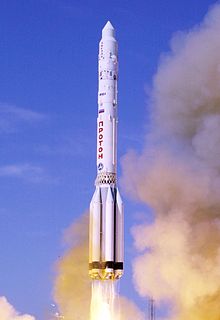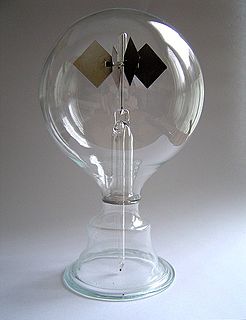
Venera 2MV-1 No.1, also known as Sputnik 19 in the West, was a Soviet spacecraft, which was launched in 1962 as part of the Venera programme, and was intended to become the first spacecraft to land on Venus. Due to a problem with its upper stage it failed to leave low Earth orbit, and reentered the atmosphere a few days later. It was the first of two Venera 2MV-1 spacecraft, both of which failed to leave Earth orbit.

Venera 2MV-1 No.2, also known as Sputnik 20 in the Western world, was a Soviet spacecraft, which was launched in 1962 as part of the Venera programme, and was intended to become the first spacecraft to land on Venus. Due to a problem with its upper stage it failed to leave low Earth orbit, and reentered the atmosphere a few days later. It was the second of two Venera 2MV-1 spacecraft, both of which failed to leave Earth orbit. The previous mission, Venera 2MV-1 No.1, was launched several days earlier.
Mars 2MV-4 No.1 also known as Sputnik 22 in the West, was a Soviet spacecraft, which was launched in 1962 as part of the Mars programme, and was intended to make a flyby of Mars, and transmit images of the planet back to Earth. Due to a problem with the rocket which launched it, it was destroyed in low Earth orbit. It was the first of two Mars 2MV-4 spacecraft to be launched, the other being the Mars 1 spacecraft which was launched eight days later.
Mars 2MV-3 No.1 also known as Sputnik 24 in the West, was a Soviet spacecraft, which was launched in 1962 as part of the Mars program, and was intended to land on the surface of Mars. Due to a problem with the rocket which launched it, it did not depart low Earth orbit, and it decayed several days later. It was the only Mars 2MV-3 spacecraft to be launched.
Mars 4, also known as 3MS No.52S was a Soviet spacecraft intended to explore Mars. A 3MS spacecraft launched as part of the Mars programme, it was intended to enter orbit around Mars in 1974. However, computer problems prevented orbital insertion from occurring.
Mars 5, also known as 3MS No.53S was a Soviet spacecraft launched to explore Mars. A 3MS spacecraft launched as part of the Mars programme, it successfully entered orbit around Mars in 1974. However, it failed a few weeks later.

Mars 6, also known as 3MP No.50P was a Soviet spacecraft launched to explore Mars. A 3MP bus spacecraft launched as part of the Mars programme, it consisted of a lander, and a coast stage with instruments to study Mars as it flew past.

Mars 7, also known as 3MP No.51P was a Soviet spacecraft launched to explore Mars. A 3MP bus spacecraft which comprised the final mission of the Mars programme, it consisted of a lander and a coast stage with instruments to study Mars as it flew past. Due to a malfunction, the lander failed to perform a maneuver necessary to enter the Martian atmosphere, missing the planet and remaining in heliocentric orbit along with the coast stage.
Luna E-8-5M No.412, also known as Luna Ye-8-5M No.412, and sometimes identified by NASA as Luna 1975A, was a Soviet spacecraft which was lost in a launch failure in 1975. It was a 5,300-kilogram (11,700 lb) Luna E-8-5M spacecraft, the second of three to be launched. It was intended to perform a soft landing on the Moon, collect a sample of lunar soil, and return it to the Earth.
Venera 2MV-2 No.1, also known as Sputnik 21 in the West, was a Soviet spacecraft, which was launched in 1962 as part of the Venera programme, and was intended to make a flyby of Venus. Due to a problem with the rocket which launched it, it failed to leave low Earth orbit, and reentered the atmosphere a few days later. It was the second Venera 2MV-2 spacecraft, both of which failed to leave Earth orbit.
Mars 2M No.521, also known as Mars M-69 No.521 and sometimes identified by NASA as Mars 1969A, was a Soviet spacecraft which was lost in a launch failure in 1969. It consisted of an orbiter. The spacecraft was intended to image the surface of Mars using three cameras, with images being encoded for transmission back to Earth as television signals. It also carried a radiometer, a series of spectrometers, and an instrument to detect water vapour in the atmosphere of Mars. It was one of two Mars 2M spacecraft, along with Mars 2M No.522, which was launched in 1969 as part of the Mars programme. Neither launch was successful.
Luna E-1A No.1 or E-1 No.5, sometimes identified by NASA as Luna 1959A, was a Soviet spacecraft which was lost in a launch failure in 1959. It was a 387-kilogram (853 lb) Luna E-1A spacecraft, the first of two to be launched. It was intended to impact the surface of the Moon, and in doing so would have been the first man-made object to reach its surface.

Luna E-8 No.201, also known as Luna Ye-8 No.201, and sometimes identified by NASA as Luna 1969A, was a Soviet spacecraft which was lost in a launch failure in 1969. It was a 5,590 kilograms (12,320 lb) Luna E-8 spacecraft, the first of three to be launched, It was intended to perform a soft landing on the Moon, in order to deploy a Lunokhod rover onto the surface. It carried the Lunokhod No.201 rover.

Luna E-8-5 No.402, also known as Luna Ye-8-5 No.402, and sometimes identified by NASA as Luna 1969C, was a Soviet spacecraft under Luna programme which was lost in a launch failure in 1969. It was a 5,600-kilogram (12,300 lb) Luna E-8-5 spacecraft, the first of at least eleven to be launched. It was intended to perform a soft landing on the Moon, collect a sample of lunar soil, and return it to the Earth. It was, along with Luna 15, one of two unsuccessful missions which had been launched by the Soviet Union in a last-ditch attempt to upstage the Apollo 11 landing under Moon race.

Luna E-8-5 No.405, also known as Luna Ye-8-5 No.405, and sometimes identified by NASA as Luna 1970A, was a Soviet spacecraft which was lost in a launch failure in 1970. It was a 5,600-kilogram (12,300 lb) Luna E-8-5 spacecraft, the fifth of eight to be launched. It was intended to perform a soft landing on the Moon, collect a sample of lunar soil, and return it to the Earth.

Soyuz 7K-L1 No.5L, sometimes identified by NASA as Zond 1967B, was a Soviet spacecraft which was launched in 1967 as part of the Zond programme. It was a 5,390-kilogram (11,880 lb) Soyuz 7K-L1 spacecraft, the second of nine to be launched. It was intended to perform a circumlunar flyby of the Moon before returning to the Earth for landing, but failed to achieve Earth orbit.

Soyuz 7K-L1 No.4L, sometimes identified by NASA as Zond 1967A, was a Soviet spacecraft which was launched in 1967 as part of the Zond programme. It was a 5,390-kilogram (11,880 lb) Soyuz 7K-L1 spacecraft, the first of nine to be launched. Although it was intended to perform a circumlunar flyby of the Moon before returning to the Earth for landing, it failed to achieve Earth orbit.

The Proton-K, also designated Proton 8K82K after its GRAU index, 8K82K, was a Russian, previously Soviet, carrier rocket derived from the earlier Proton. It was built by Khrunichev, and launched from sites 81 and 200 at the Baikonur Cosmodrome in Kazakhstan.

Mars 1M No.1, designated Mars 1960A by NASA analysts and dubbed Marsnik 1 by the Western media, was the first spacecraft launched as part of the Soviet Union's Mars programme. A Mars 1M spacecraft, it was intended for conducting flight testing system and to study the interplanetary environment between Earth and Mars, however it was lost in a launch failure before it could begin its mission.

Mars 1M No.2, designated Mars 1960B by NASA analysts and dubbed Marsnik 2 by the Western media, was a spacecraft launched as part of the Soviet Union's Mars programme, which was lost in a launch failure in 1960. 1M No.2, which was intended to explore Mars from flyby trajectory, was destroyed after its Molniya carrier rocket failed to achieve orbit.












